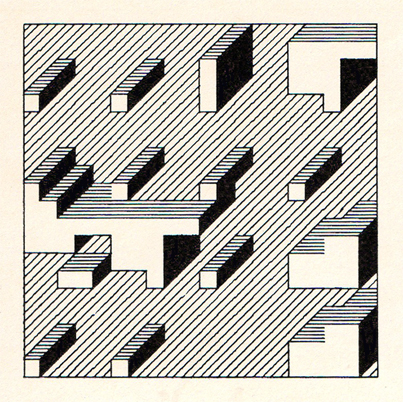Art and Computer
There is no denying that artistic research can and sometimes must be subordinate to the purpose of improving the human condition, yet it should also be convened that in no way art is able to contribute to this end without providing cultural models, such that are able to prefigure a rational use of the available energies. In substance, it wil be easier to free humanity from the "Imprisonment of practical realism" (Malevitch) by breaking the circle at the point where the exploitation of technical means is most advanced in respect to the present, concrete historical situation.
Art, by the way, did always seize the most efficient means of production. Indeed, an artist is someone who works giving the utmost credit to the imaginative faculties, and who therefore does not refuse to exercise those faculties when the technology offers powerful means to intervene in the process of changing the world. Otherwise, art would be relegated to a refined but useless trade mannerism, or it would be submitted to menial practical ends, as an instrument for commercial or political propaganda.
At the current moment the most advanced technology is the one that supplies information, which in the meanwhile is also overtaking the production of goods. And it is clear that, within the process of shaping information, it could be convenient to use the electronic computer rather than the human mind.
And finally, it must also be clarified, that here we are considering information in itself, the experimentation of a method for the formation of images, and not the application of the computer to practical ends. The hypothesis envisioned in this exhibition assigns to the artist the traditional role: to imagine and to create.
Giulio Montenero
From the catalogue presentation for the personal exhibition at Palazzo Costanzi, Trieste, Italy 1971

